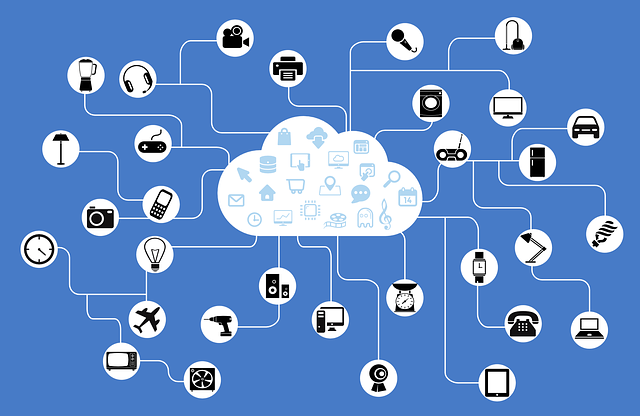Cross-cloud is a term in cloud computing that refers to the ability to smoothly run applications and manage workloads across different cloud service providers (CSPs). The idea of “cross-cloud” came about with the rise of multi-cloud strategies. This strategy involves using a mix of public, private, and edge clouds, along with on-site infrastructure, to manage various computing needs. The main goal of cross-cloud is to standardize operations across different cloud providers. It allows organizations to have a consistent way of handling applications, infrastructure, management, security, and access, whether they’re using cloud services or their own on-premises resources.

Unlock the Power of Cross-Cloud for Your Organization
Cross-cloud technology is essential for any organization looking to make the most of multiple cloud services. It provides a unified system that maintains consistency and control, regardless of the cloud provider. This integration allows organizations to enhance their operations with streamlined management, better analytics, and improved visibility. These tools are vital for boosting efficiency, managing costs, keeping up with compliance, and safeguarding data.
Here’s what cross-cloud can do for you
- Speed Up Your Cloud Journey: Accelerate innovation and get ahead in your market.
- Reduce Costs: Save money and time, enhancing cost efficiency dramatically.
- Choose Freely: Enjoy the ultimate flexibility, choosing the best options from any cloud service.
Successful cross-cloud applications have led to significant achievements
- Rapid App Development: Launch new applications in days, not months.
- Enhanced E-commerce Support: Keep your website running smoothly during high traffic periods.
- Optimal App Performance: Move crucial apps to the most efficient cloud for unbeatable performance.
- Efficient Remote Work Transitions: Quickly shift hundreds or even thousands of employees to work remotely.
- Productivity Anywhere: Provide your team with fast, reliable access to essential applications.
- Embracing cross-cloud solutions: can transform how your organization operates, making it more agile, cost-effective, and secure.
Differences Between Cross-Cloud and Multi-Cloud Strategies
When we talk about a multi-cloud strategy, we’re referring to a setup where an organization uses a mix of different cloud services. This could include combinations of on-site systems, private clouds, public clouds, and even edge clouds, which are tailored to specific tasks according to what each cloud does best.
Cross-Cloud
On the other hand, cross-cloud takes things a step further by integrating these different environments through a layer of abstraction that connects various cloud functions together.
In a typical multi-cloud environment, one major challenge is moving or accessing data between different cloud services because each provider might manage their data differently. This is where cross-cloud strategies shine; they break down these barriers, allowing data to flow freely between clouds without getting trapped in what are known as “silos.”
While multi-cloud refers to the actual architecture of using multiple cloud platforms, cross-cloud isn’t just about architecture—it’s more about how these platforms operate together. Cross-cloud acts as a model that ensures different clouds work in harmony, providing a consistent experience across various platforms.

Navigating the Hurdles of Multi-Cloud Management
When you’re juggling multiple cloud services, it’s crucial to be aware of several key challenges:
Compatibility Issues
Often, organizations without a multi-cloud strategy don’t plan for their applications to work across various platforms. This lack of interoperability can lead to compatibility problems between different clouds or systems.
Complexity
Managing multiple clouds adds a layer of complexity. If your organization only handles a small amount of data or needs limited resources, sticking with a single cloud or an on-premises setup might be a smarter choice.
Overwhelming Choices
The flexibility of using multiple clouds also introduces a vast array of options. You’ll have to decide among numerous providers, types of cloud services, and locations for hosting and managing your apps and workloads. This is where understanding how to utilize multi-cloud services effectively can be beneficial.
Understanding these challenges will help you make more informed decisions about managing your cloud environment efficiently.

Different Types of Cross-Cloud Services
Cross-cloud services cater to various needs, making them essential for businesses aiming for efficiency and quick results. Here’s how these services can make a difference:
App Platform
Keeping customers engaged and boosting productivity are key goals for any business. By using cloud services for your application platform, you can quickly develop and launch modern apps. This not only speeds up the process but also gives developers the freedom to choose the best cloud for each application.
Cloud Infrastructure
Running modern applications often involves using multiple clouds. Whether it’s hosting some software on-site, using public clouds for others, or even utilizing edge environments, flexibility is crucial. Being able to choose the right infrastructure for each app without having to redo or extensively modify your existing setups saves both time and money.
Cloud Management
Managing infrastructure across multiple clouds can be simplified by using consistent setups. This eliminates the need to switch between different tools. Also, automating some of the processes helps optimize the management of these environments, making it easier and more effective.
Anywhere Workspace
The cloud also offers solutions for the increasingly distributed workforce, providing easy access to necessary apps from anywhere. A good cloud-based workspace solution allows employees to work effectively regardless of location, using their preferred devices.
Security and Networking
As you expand your operations across various clouds, connecting and securing your applications becomes vital. Cross-cloud security services help ensure that developers, operations teams, and remote workers can operate independently without compromising security or efficiency.
These cross-cloud services not only enhance operational efficiency but also support businesses in adapting to changing needs without disruption.

How Does Prosimo Make Multi-Cloud Operations Easier?
1: Easy Multi-Cloud Connections
Prosimo offers a feature called Cross-Cloud Service Connect that makes it a breeze to link up services across AWS, Azure, and Google Cloud. This means you can set up your apps on these platforms without getting tangled in complex network setups.
2: Smooth Cloud Migration
With Prosimo’s AI-driven networking tools, moving your applications from local servers to cloud platforms like AWS and Azure is straightforward, ensuring that your business keeps running smoothly with no downtime.
3: Better Security and Compliance
Prosimo ensures your data is safe and compliant with laws when transferring between AWS, Azure, and Google Cloud, thanks to their Cross-Cloud Service Connect’s robust security and compliance safeguards.
4: Boosted Application Performance
Prosimo’s advanced cloud networking technology enhances how your applications perform on multiple clouds, cutting down on delays and offering a better experience to customers worldwide.
5: Streamlined Multi-Cloud Management
Manage everything cloud-related from one place with Prosimo’s unified networking solution. It allows for easy orchestration and monitoring of your apps across different cloud services with just a few clicks.
These examples illustrate how Prosimo streamlines working with multiple cloud platforms by simplifying connections, easing migration, securing data, boosting performance, and consolidating management tasks.
Conclusion
Cross-cloud computing enables businesses to efficiently manage applications across multiple cloud service providers. It emerged from multi-cloud strategies, which combine various types of clouds and on-site infrastructure to meet diverse computing needs. The main advantage of cross-cloud is its ability to provide a standardized operation across different platforms, ensuring consistency in application management, security, and access.
Cross-cloud technology offers significant benefits, including accelerated innovation, cost savings, and flexible choice of cloud services. It enhances operational efficiency with streamlined management and improved data flow, avoiding the silos typical in multi-cloud setups. Additionally, it supports rapid application development, robust e-commerce support, and effective transitions to remote work, making organizations more agile and secure.
Cross-cloud services cater to various business needs through dedicated solutions for application deployment, infrastructure flexibility, and secure management. Tools like Prosimo’s Cross-Cloud Service Connect simplify multi-cloud operations by improving connectivity, security, and performance across major cloud platforms.
Overall, cross-cloud strategies help businesses maximize their cloud investments by improving efficiency, reducing costs, and enhancing security across their digital operations.
FAQs: Cross-Cloud Technology
What is cross-cloud computing?
Cross-cloud computing refers to the capability to operate applications and manage workloads across different cloud service providers in a smooth and integrated manner. It aims to standardize operations and provide a consistent management approach across diverse cloud environments.
How does cross-cloud differ from multi-cloud?
While multi-cloud involves using a combination of different cloud services (like public, private, and edge clouds) without integration, cross-cloud goes a step further by interconnecting these services. Cross-cloud provides a unified management layer that allows data and applications to move seamlessly across various platforms, eliminating data silos and enhancing operational efficiency.
What are the main benefits of adopting cross-cloud technology?
The primary benefits of cross-cloud technology include enhanced operational efficiency, faster innovation, reduced costs, and greater flexibility in choosing cloud services. It also improves application performance, supports rapid development, and facilitates smooth transitions to remote work environments.
Can cross-cloud technology help in cost management?
Yes, cross-cloud technology can significantly aid in cost management by allowing organizations to select the most cost-effective cloud services for different tasks. It reduces the need for extensive infrastructure investments and enables more precise control over resource utilization, leading to better cost efficiency.
What are the challenges of managing multiple cloud environments and how does cross-cloud address them?
Managing multiple cloud environments can be complex due to issues like compatibility, data silos, and the administrative burden of using different platforms. Cross-cloud addresses these challenges by providing a cohesive management experience across clouds, simplifying data integration, and reducing the complexities associated with using multiple cloud services. This unified approach helps in maintaining consistency and control, regardless of the cloud provider.